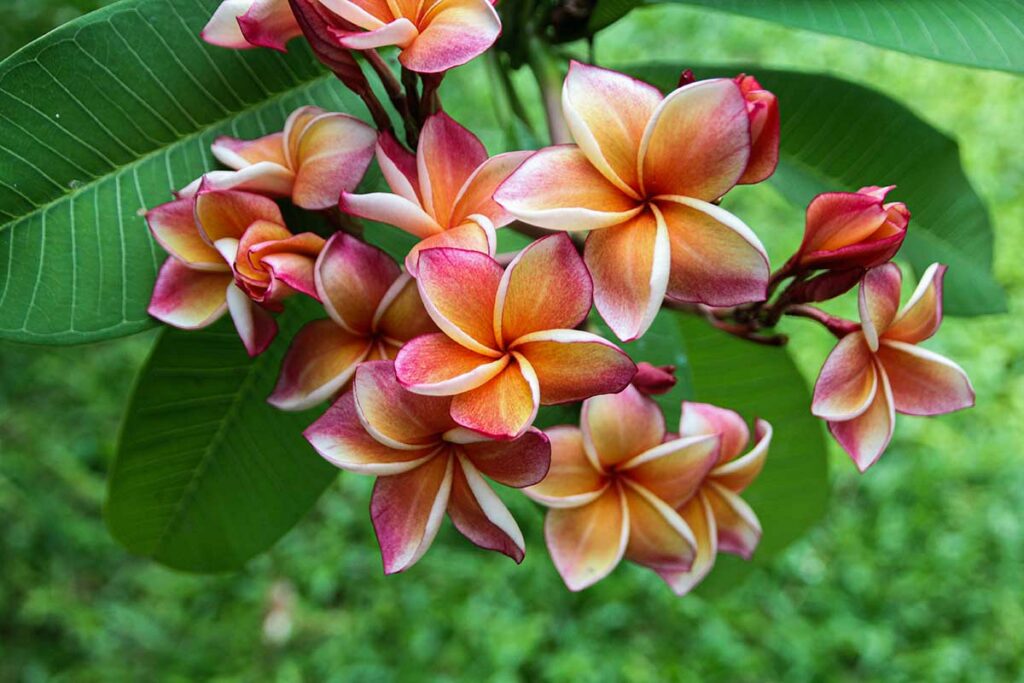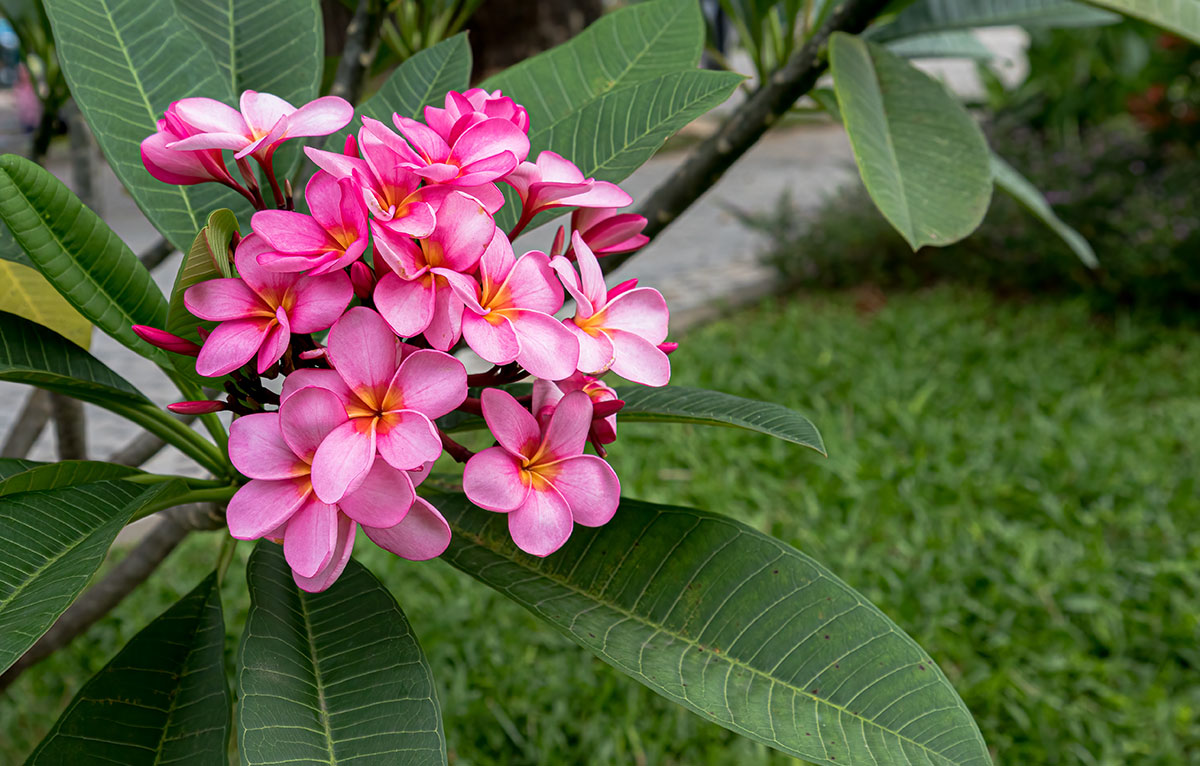
Plumerias are beautiful deciduous plants that can bring an abundance of color to your garden.
Their branches have a sausage-like appearance and their blooms are fragrant and showy, and come in a wide array of vibrant colors.
Because their blooms are so attractive, it can be disheartening if your plumeria isn’t flowering.
Don’t fret, however, if your plumeria isn’t producing those much desired blooms. There are a few tips on how to get plumeria to bloom that may help encourage your tropical plant to flower.
Make Sure Plumerias Have The Right Care
The best way to ensure your plumeria blooms is to give the plant the right care. Proper care is vital for the overall health of the plant, and if it doesn’t get that care, it cannot produce the desirable blooms.
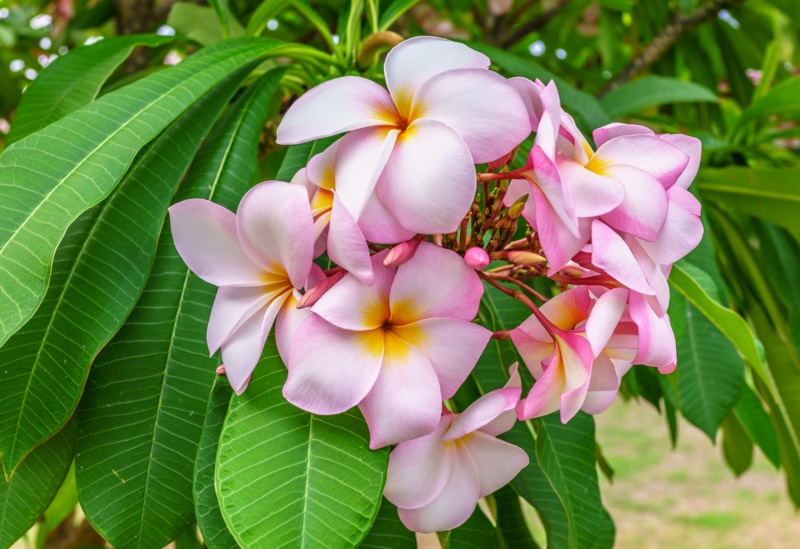
Plumeria Lighting Requirements
Plumerias are sun-loving plants that can also tolerate some low light. For best results, make sure the plumeria is getting at least 6 hours of sun every day. If your plumeria isn’t blooming, you may have to move the plant to a sunnier location.
Watering Requirements For Plumeria
The amount of water the plumeria needs will vary throughout the year. During the active growing period, which is typically in the summer, the plant will need more water than during their dormant period. Not providing enough water when the plant needs it the most is one of the quickest ways to ensure the plant doesn’t produce blooms.
Plumeria Growing Medium
The type of soil that the plumeria will need depends on whether the plant is growing in the ground or in a container. In-ground plumerias will grow best in soil that is a mixture of loamy and sandy, while container plants need a well-draining potting mixture, such as a mixture for cacti.
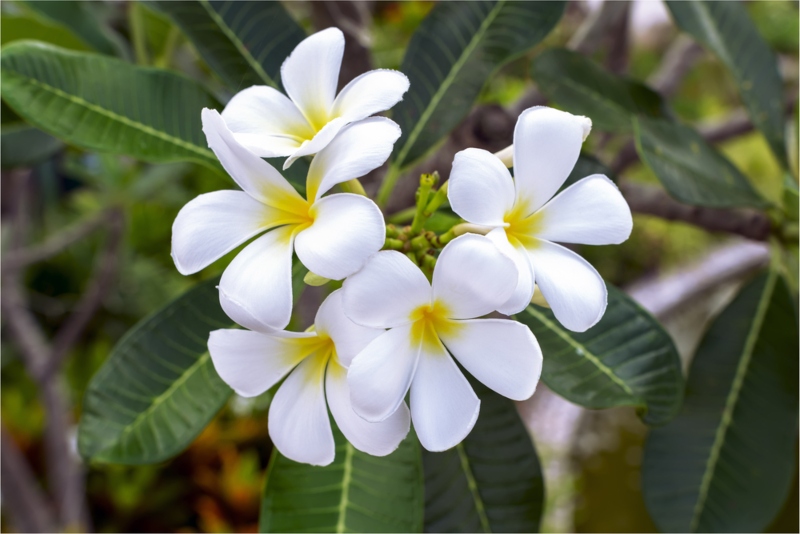
Fertilizing Plumeria
Plumeria plants need a fertilizer with an abundance of phosphorous, which is the middle number found on the label of the fertilizer.
If you’re growing plumeria in a container, you may also want to consider a fertilizer that is low in nitrogen, which is the first number on the label.
Nitrogen encourages growth, which is not something you want when your trying to keep the plant compact in a container.
When choosing the fertilizer, select one that is water-soluble. For in-ground plants, apply every 4 to 6 weeks.
For container plumeria, apply the fertilizer monthly. Make sure to follow the instructions on the fertilizer label.
Pests Can Also Cause Plumeria To Not Flower
Another cause of the plumeria not blooming is pests. Pests are not unusual, especially for outdoor and container plants, and they can quickly cause plants to become stressed and prevent them from flowering. A few of the most common pests that can attack plumerias are:
- Six spotted spider mites
- White flies
- Aphids
- Mealybugs
- Thrips
- Slugs and snails
- Scale
If you notice pests on your plumeria, use a safe pesticide, such as neem oil or insecticidal soap, and apply it to the plant.
These safer options are less likely to cause problems for beneficial insects, but can effectively kill the pests causing the plumeria to not bloom.
Make sure, however, to follow the application instructions found on the label.
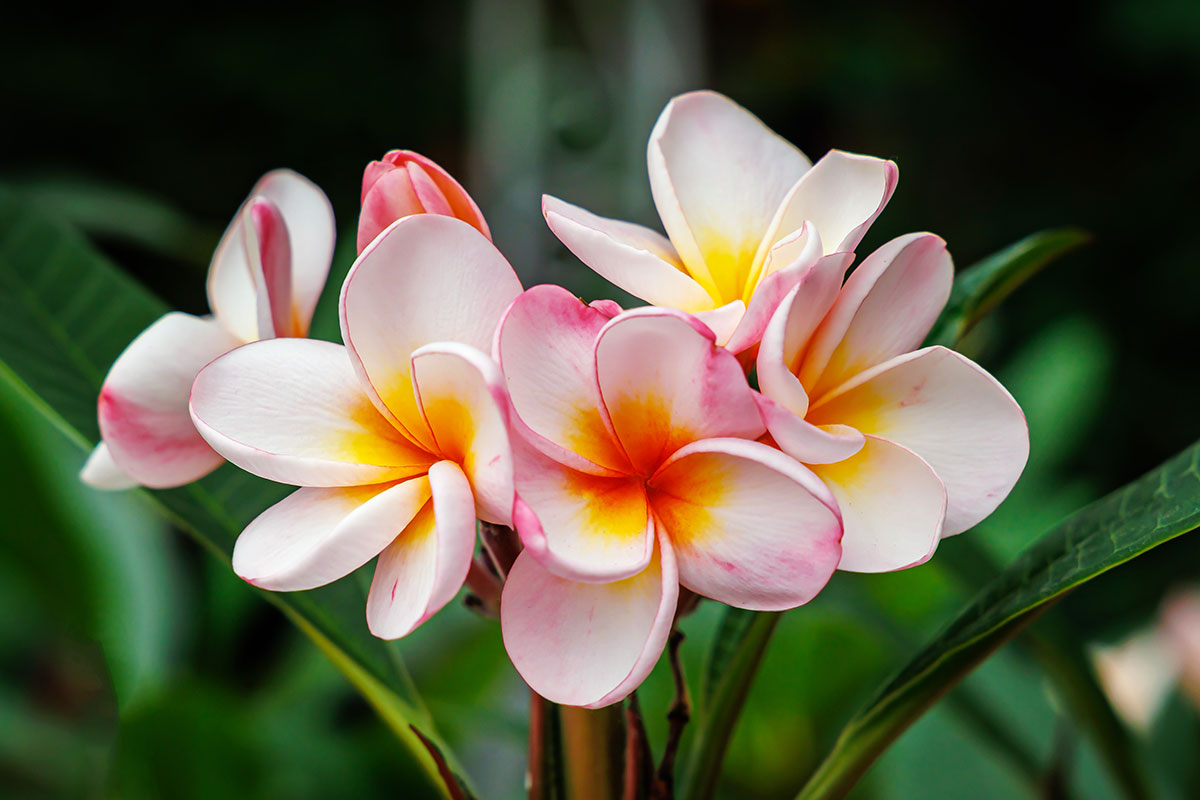
A Few Things To Consider
If you are providing the right care for your plumeria and it still isn’t blooming, the issue could be caused by cold temperatures.
Plumerias are not cold tolerant and are only hardy to 33-degrees Fahrenheit. Anything below that could result in the plant not producing flowers.
Another possibility is that it just isn’t time for the plant to flower. Plumerias typically start to bloom later in spring or even in early summer.





